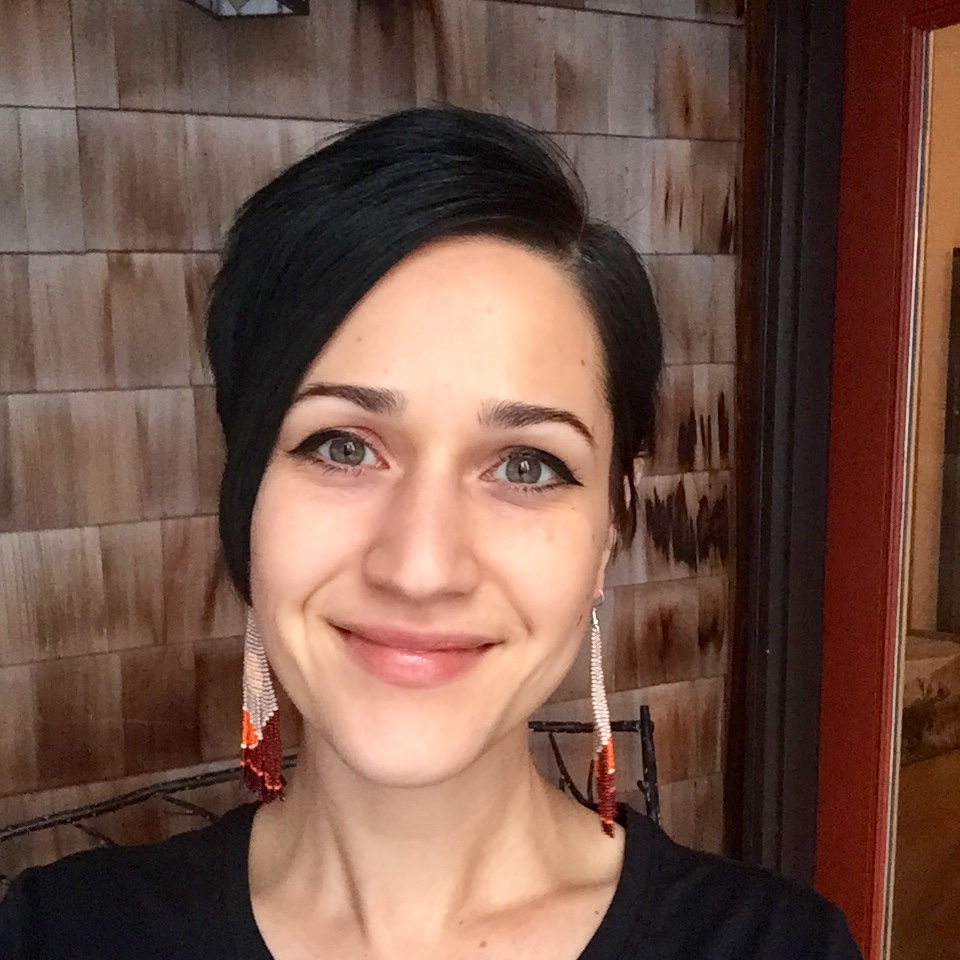
Having lived my whole life in Fairbanks, Alaska—a small city nestled just 120 miles south of the Arctic Circle—I [eventually] adopted a set of practices that have helped me shift from simply surviving to actually thriving in the winter months.
What’s your least favorite month of the year? If you said January, you’re in good company. A recent survey found that 26% of Americans ranked this post-Christmas month as the most unpleasant, with February coming in as a close second.
These results probably aren’t surprising. Sandwiched between the holy beauty and cheerful festivities of December and the whisper of spring promised by March, January and February don’t seem to have much to offer except cold, dark days—days that leave many people feeling sad, lonely, and lethargic.
Having lived my whole life in Fairbanks, Alaska—a small city nestled just 120 miles south of the Arctic Circle—I’m well-acquainted with the challenges of winter. In my early twenties, I went through a phase in which our subzero temperatures, long nights, and icy roads seemed intolerable. But, eventually, I adopted a set of practices that have helped me shift from simply surviving to actually thriving in the winter months.
If you long to enjoy winter rather than simply endure it, here are nine things that helped me make friends with winter, and I hope you find them helpful too:
1. Get Outside
When it’s -10 degrees outside, one of the last things I want to do is leave the comfort of my home. However, even though I sometimes have to force myself, I’ve found that getting fresh air and exercising regularly is one the very best ways to boost my mood and refresh my mind and body. For me, the key to getting out consistently has been to find outdoor activities I enjoy and that are easy for me to engage in, like cross-country skiing, sledding, and snowshoeing. On days when those activities aren’t convenient or possible, I’ve found that even a quick walk to the mailbox rejuvenates me.
What outdoor activities do you enjoy? How might you incorporate them into your routine? Studies show that going outside and getting fresh air, even for short periods of time, can increase energy levels, boost mood, and improve health, so I encourage you to give it a try!
2. Get the Right Gear
As wonderful as getting outside in the winter can be, unless you have the right clothing and gear, tromping through snow and ice can be miserable. It took me a while to accept this reality. When I was in college, I made many frigid treks across campus clad in a thin wool coat and flimsy canvas Converse. At that time in my life, puffy coats and insulated boots just weren’t “cool.” So, I chose fashion over comfort—and was, well, uncomfortable.
Nowadays, when I’m running errands around town, you’ll find me bundled up in UGGS, gloves, and a substantial down coat. If I’m going sledding, snowshoeing, or for a walk around the neighborhood, I pull on my snow pants, neck warmer, and grippy snow boots.
It sounds so simple, but now that I’ve learned to dress right for the weather, I find winter far less formidable. What gear might make getting outside easier and more enjoyable for you?
3. Count Your Blessings
When I was in my early 20s and struggling to accept winter in Alaska, I used to encourage myself by listing all the things we don’t have that make living in my hometown palatable: We don’t have snakes…We don’t have scorpions…We don’t have tornadoes….Eventually, I started focusing on the good things we do have, such as stunning sunsets, magical northern lights, frosty forest landscapes that look like they came straight from a Chronicles of Narnia book, and endless opportunities to wear my favorite scarves and sweaters.
As I made a habit of counting my blessings, I realized there is a lot to love about this place I call home. And before I knew it, to my surprise, I discovered that I was actually falling in love with it. Now, I can honestly say there’s nowhere else I’d rather live—even in the winter months.
What do you love about where you live? Your current situation might not be ideal, but there are probably at least a few positive things about your region. Try shifting your attention from what you don’t like to what makes you happy. As you spend time thanking God for the blessings He’s provided, chances are that, before long, you’ll experience a shift in your feelings about your geographical location.
4. Cozy Up
It might be cold outside, but in the wintertime, cozy touches around my home, such as fluffy sheepskins, knitted blankets, and accent lamps go a long way toward helping me savor the season. I also love the ambiance created by daily fires in our glass-fronted woodstove (not much makes me happier than spending an afternoon cuddled up in front of it with a good book!), and I enjoy the warm, welcoming glow of candles during my morning devotional time.
How about you? What cozy touches make you happy? Quilts, wool socks, fuzzy slippers, furry throws, and electric fireplaces are some accessories you might consider adding to your home this winter.
5. Shine Some Light
As mentioned, darker days are a defining feature of the winter months. Here in Fairbanks, our average length of day in January is a measly 5.2 hours. For some, these short days can lead to a diagnosis of Seasonal Affective Disorder—a condition brought on by lack of sunlight and characterized by fatigue and feelings of depression.
But even those who don’t get full-blown seasonal affective disorder can suffer from lethargy and feelings of sadness during the winter months. Personally, I feel more tired and also sometimes a little down this time of year. One thing that helps me stave off the effects of low sunlight is using a light box—sometimes referred to as a happy light or a sun lamp. The idea is that exposing oneself to bright light helps reset sleep-wake rhythms and increase serotonin production. While it certainly doesn’t replace natural sunlight, I do find that exposing myself to bright light helps mitigate fatigue and keep depression at bay.
If you decide to try a light box, it’s best to check in with your doctor to make sure it’s a good fit for you and your unique health situation, as certain medical conditions can be exacerbated by bright light. The kind of light emitted by the light box and the intensity of the light are also important to consider, so be sure you do your research and find a light that follows accepted light-therapy protocols.
6. Check Your Vitamin D Levels
Another potential negative effect of dark days is vitamin D deficiency. Vitamin D, known as the “sunshine vitamin,” is important for regulating mood and keeping bones strong, and studies have indicated that proper levels can help prevent a number of diseases. However, because sun exposure is the primary way our bodies receive vitamin D, winter’s dark days can lead to low levels of this essential vitamin. Many people, including myself, find it necessary to take a supplement to keep their vitamin D levels up—and keep feeling good in the winter.
According to Harvard Health, if you are over the age of 70 or live north of latitude 37, you might benefit from a vitamin supplement too. But before you go popping pills, talk to your doctor and get your vitamin levels checked. Vitamin D can build up in the body and cause serious side effects if too much is ingested.
7. Cultivate Community
A sense of community is an important key to well-being. Unfortunately, winter conditions aren’t exactly conducive to socialization. Things like playdates at the park, Saturday afternoon picnics, and neighborly chats over the back fence all tend to get put on pause, leading many to contend with feelings of isolation and loneliness.
To overcome my own feelings of loneliness, I do my best to keep in touch with loved ones. Though doing so takes some effort and intentional planning, I know that I can count on a boost in my mood after sharing coffee or dinner with friends or family.
What can you do to cultivate community with others during these winter months? You might consider hosting a book club or monthly craft night, taking an art class, organizing a cookie bake-off or potluck, gathering a group to assemble a care package for a mutual friend who has moved away, or scheduling a regular luncheon with a friend.
8. Give Yourself Permission to Stay Home
While congregating with friends and family can be a big way to beat the winter blues, it’s okay to hunker down, too. When the road conditions are bad or the temperatures are dangerously cold, I give myself permission to turn down invitations to nonessential events—especially those that occur in the evening and would require me to drive long distances on dark, icy roads—and instead, enjoy a cozy evening at home.
9. Look Forward
A few months ago, I bought concert tickets for a favorite singer who will be visiting Fairbanks in February. My husband and I also have another event to look forward to in February: an annual mountain film festival at our local university—something that has become a winter tradition for us. With both of these events just over a month away, I’m starting to feel excited about them.
A concert here and a film festival there might not sound like a big deal, but I’ve found that planning interesting activities and having fun events to anticipate adds a spark of joy to these slow, dark days. What events do you anticipate? If you don’t have anything specific to look forward to, do a little research online and explore any concerts, plays, art shows, home shows, etc. your town has to offer. You might find something fun to brighten the winter days, and who knows, you might even start a new winter-time tradition!
The Gift of Winter
In her book Growing Slow, Jennifer Dukes Lee writes, “Perhaps winter isn’t the punishment you thought it was. Perhaps it is a gift.” There’s no denying that the winter months are harder than the warm, sunny, middle-of-the-year months. But, as Jennifer Dukes Lee suggests, could it be that they have more to offer than we tend to give them credit for? Could it be that they are even a gift? Though I didn’t always think so, I now happily believe the answer is yes.
This year, I hope you can embrace the beauty winter has to offer. As you do, I pray that you experience newfound joy and truly flourish in this season!
Photo Credit: ©GettyImages/Mkovalevskaya

Related podcast:
The views and opinions expressed in this podcast are those of the speakers and do not necessarily reflect the views or positions of Salem Web Network and Salem Media Group.
Related video:
In the video are 5 Tips for Decluttering Your Space by Michelle S. Lazurek.








